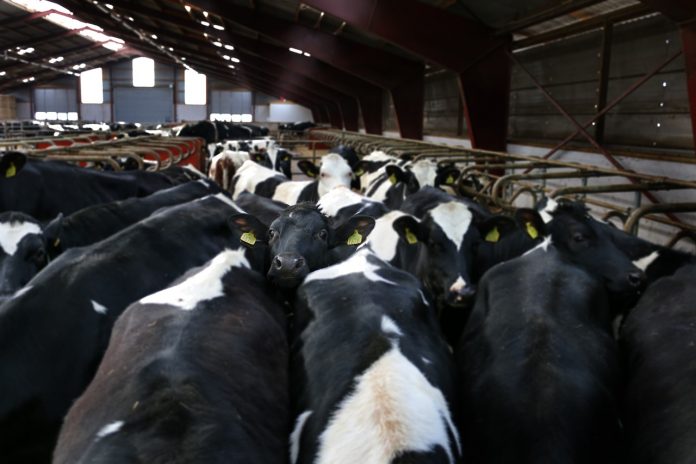The old adage of “milk the best, sell the rest” still holds true.
With the current economic conditions in the dairy industry, the profitability of the farm, and thus the contribution of each cow toward this profitability, is very important. The dairy farm is in the business to market milk in a profitable manner — and cows need to earn their stay on the farm.
If a cow is not being profitable, then she needs to go.
The average cull rate on dairy farms is 35 percent, but even cull rates higher or lower than this can have different management implications and may be either good or bad.
Given the economic conditions, the number of dairy farms in the U.S. has decreased at a faster rate in 2018 than during recent years. Due to these farm closures and the higher scrutiny of cows that earn their keep, the number of dairy cows culled in the US from January through November increased 5.5 percent in 2018 compared to 2017 (USDA).
Involuntary culling on a dairy farm can be caused by many things, including lack of pregnancy, lameness, mastitis, other diseases, etc. Voluntary culling mostly results from cows going for dairy purposes or “low” milk production (this one may be considered voluntary or involuntary).
For low milk production, this threshold is influenced by the price of milk, the price of feed and other variable costs, stocking density in the barn, etc.
When to sell
The timing of selling the targeted culls may be influenced by beef market prices, which are rather low at this time, the number of head ready for market, distance to market, and other market forces.
Sometimes though when milk prices are low and beef prices are low, when the cow needs to go — it’s just simply time for her to leave. The longer she is kept, the more money lost.
Of course, sometimes with involuntary culls, they need to go while they are ambulatory because if they become non-ambulatory, they can’t be taken to the market.
Where do they go?
In addition to the financial aspects to culling dairy cows at the farm level, another aspect about cull dairy cows is what happens to them after they leave the farm. These issues are being focused on in the US and other countries.
A study conducted in Denmark and published in November 2018 (Frontiers in Veterinary Science, https://doi.org/10.3389/fvets.2018.00297) investigated whether the clinical condition of cull dairy cows deteriorates during transport (less than 8 hours) and evaluated the risk factors for potential deterioration of the clinical condition.
A total of 411 dairy cows were clinically examined on farm before loading and again after unloading at the slaughter plant. One-fifth of the cows either became lame or lamer during transport, and there was an increase in the proportion of lame cows after transport (41 percent after vs. 31 percent before).
An increase in the proportion of cows with milk leakage (17 percent vs. 1 percent) and wounds (34 percent after vs. 22 percent before) after transport was also found.
Low body condition score (BCS) (< 2.75), early or late lactation [<100 or >300 Days in Milk or DIM], digital dermatitis in the hind feet, and pelvic asymmetry were identified as risk factors for the deterioration in lameness during transport.
Early lactation (<100 DIM) and transport distance (>62 miles) were identified as risk factors for milk leakage.
The results demonstrate that cull dairy cows are vulnerable to the strains of transport, even journeys shorter than 8 hours, to the extent that the occurrence of clinical findings was increased after transport in cows legally considered fit for transport.
Canadian research
Considerable focus has occurred in Canada on the transport of cull dairy cows in recent years, including by the Canadian Veterinary Medical Association and other groups.
In a recent article published in the Journal of Dairy Science (December 2018; 101:11170-11174), a convergence of Canadian experts on the issues relating to culling of dairy cows provided the following conclusions:
1. Additional information needs to be assembled on travel times and delays from farm to slaughter;
2. Increased awareness is needed among producers and the veterinarians of potential travel distance and delays;
3. Proactive culling of dairy animals should occur to reduce risks during transport;
4. The ability of personnel to assess animal condition before loading on a transport vehicle needs improving;
5. Local options for the slaughter of cull dairy cows to reduce transport distance needs to be identified,
6. Different management options, such as emergency slaughter and mobile slaughter, should be investigated;
7. All farms and auctions should have, or can access, personnel trained and equipped for euthanasia; and
8. Cooperation among enforcement agencies and wider adoption of beneficial regulatory options should be promoted.
All farms play role
In management of the dairy farms, the focus on “milking the best and selling the rest” is fundamental; however, condition of the animal for transport based on its health, transport distance, transport conditions, etc. needs to be taken into consideration. Thus, the animal’s condition beyond the farm gate needs to be a factor in the consideration as to whether an animal is suitable to leave the farm.













